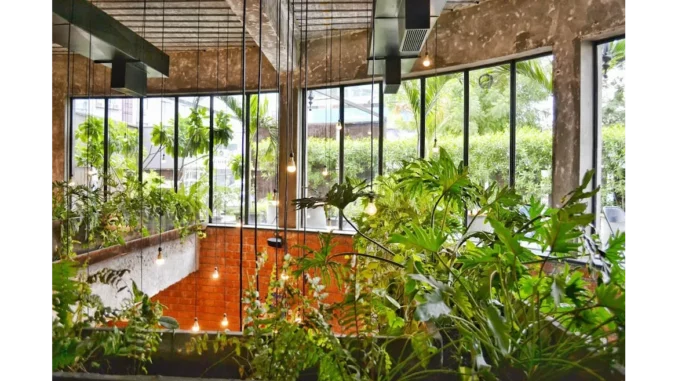
In the modern landscape of construction and architecture, there is an increasing recognition of the profound impact that the built environment has on both human health and the planet. This awareness has ushered in a paradigm shift towards creating buildings that are not only sustainable but also supportive of the physical and psychological well-being of their occupants. The exploration of this new approach encompasses the use of innovative materials, the integration of smart technologies, and the application of evidence-based design principles—all of which are crucial to fostering a healthier and more sustainable future.
Successful low-energy building design hinges on careful planning. Focus360 Energy can help.
Central to the concept of sustainable architecture is the careful selection of building materials, which must prioritise environmental sustainability and human safety. Traditional materials have often been laden with harmful substances such as volatile organic compounds (VOCs), which can deteriorate indoor air quality and adversely affect the health of inhabitants. Therefore, the industry is increasingly focusing on materials that are devoid of such toxins and are sourced in a sustainable manner. The utilisation of recycled materials or those with a minimal carbon footprint can significantly diminish the environmental impact of construction. Moreover, materials that enhance energy efficiency, such as advanced insulation systems and reflective roofing, contribute to the overarching sustainability of a building. This thoughtful integration of materials is guided by an understanding of building physics and chemistry, ensuring alignment with the principles of building biology, thereby safeguarding both human and environmental health.
The advent of digitalisation and automation has become a cornerstone in advancing healthy and sustainable architecture. Smart technologies are instrumental in efficiently managing the consumption of energy, water, and other resources, which not only reduces operational costs but also mitigates the environmental impact of buildings. For instance, automated lighting and HVAC systems can dynamically adjust based on occupancy levels and external weather conditions, thus optimising energy use while enhancing occupant comfort. Additionally, the incorporation of Internet of Things (IoT) devices facilitates real-time monitoring of indoor environmental parameters, such as air quality, temperature, and humidity. This data-driven approach empowers building managers to make informed decisions that bolster occupant health and well-being while maintaining sustainability targets.
In parallel, the design of such innovative buildings is increasingly being driven by evidence-based and simulation-based methodologies. These approaches employ scientific research and advanced computational tools to forecast the repercussions of design decisions on both occupant health and the environmental performance of buildings. For example, simulation tools can model how natural lighting influences energy consumption and occupant comfort, guiding architects in optimising window placements and shading solutions. Evidence-based design further considers the psychological and physiological effects of environmental factors on occupants, ensuring that the built environment supports cognitive function, reduces stress, and promotes overall well-being. This holistic approach is integral to crafting spaces that are both nurturing and environmentally responsible.
However, the successful realisation of such sustainable building practices is contingent upon a thorough understanding of the legal and regulatory frameworks that govern construction activities. These frameworks set forth the standards for energy efficiency, material safety, and environmental protection, ensuring that buildings adhere to necessary criteria for sustainability. Effective project management is pivotal in navigating these regulations and orchestrating the collaboration among various stakeholders, including architects, engineers, contractors, and building owners. It is this collaborative effort that ultimately translates sustainable design concepts into reality.
The movement towards healthy and sustainable buildings marks a significant advance in the realms of architecture and construction. By weaving together innovative materials, smart technologies, and evidence-based design principles, the industry can create environments that simultaneously enhance human health and minimise environmental impact. As the demand for such buildings grows, professionals must continuously equip themselves with the requisite knowledge and skills to rise to these challenges. This shift towards sustainable architecture is more than just a contemporary trend; it is an essential step towards ensuring a healthier, more sustainable future for coming generations.


Be the first to comment